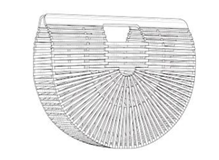On June 21, 2022, US Patent & Trademark Office (PTO) Director Katherine K. Vidal issued a memorandum addressing interim procedures for discretionary denials in America Invents Act (AIA)-post grant proceedings at the Patent Trial & Appeal Board (Board). In 2020, in order to minimize the potential conflict between the Board and parallel district court proceedings, the PTO designated the Board’s opinion in Apple v. Fintiv as precedential. Since Fintiv, the Board has issued several discretionary denials of institution based on parallel proceedings in district (and in some cases other administrative) courts. Director Vidal’s memo seeks to provide additional guidance on the PTO’s interpretation of Fintiv and its progeny and addresses multiple factors that were previously left to individual administrative law judge (ALJ) interpretation.
The memo includes rendering an initial evaluation of the merits of the petition. In particular, the Board will not deny institution of an inter partes review (IPR) or post-grant review (PGR) under Fintiv when a petition presents compelling evidence of unpatentability. This standard is higher than the institution standard, which requires only that “there is a reasonable likelihood that petitioner would prevail with respect to at least 1 of the claims challenged in the petition.” While the memo does not elaborate on the evidence required to meet this compelling standard, numerous decisions were cited as illustrative. (See: e.g., Illumina Inc. v. Trs. of Columbia Univ., IPR2020-00988, Paper 20 (PTAB Dec. 8, 2020); Synthego Corp. v. Agilent Techs., Inc., IPR2022-00402, Paper 11 (May 31, 2022); Samsung Elecs. Co. v. Scramoge Tech., Ltd., IPR2022-00241, Paper 10 (June 13, 2022).)
Additionally, Director Vidal confirmed that Fintiv does not apply to parallel proceedings before the International Trade Commission nor where there has been a stipulation not to pursue the same grounds in a district court proceeding. The stipulation applies to grounds that are actually raised in the petition and any grounds that could have reasonably been raised in the petition, suggesting that there may be some dispute later in the district court proceeding about what grounds “could have reasonably been raised in the petition.”
Finally, the memo clarified the second factor of the Fintiv analysis: the speed with which the district court case may go to trial and be resolved. The Board will consider not only the scheduled trial date, but also the median time-to-trial for the particular district court, number of cases before the specific district court judge and the speed and availability of other dispositions.
Practice Note: While the standard for institution has not changed, the new compelling standard effectively ups the bar for any IPR, PGR or covered business method (CBM) proceedings where there is a parallel district court case. Prior to filing a new petition, patent challengers should objectively weigh the merits of their challenge or consider stipulating not to pursue the same invalidity grounds in the parallel district court proceeding.
read more

 Subscribe
Subscribe



